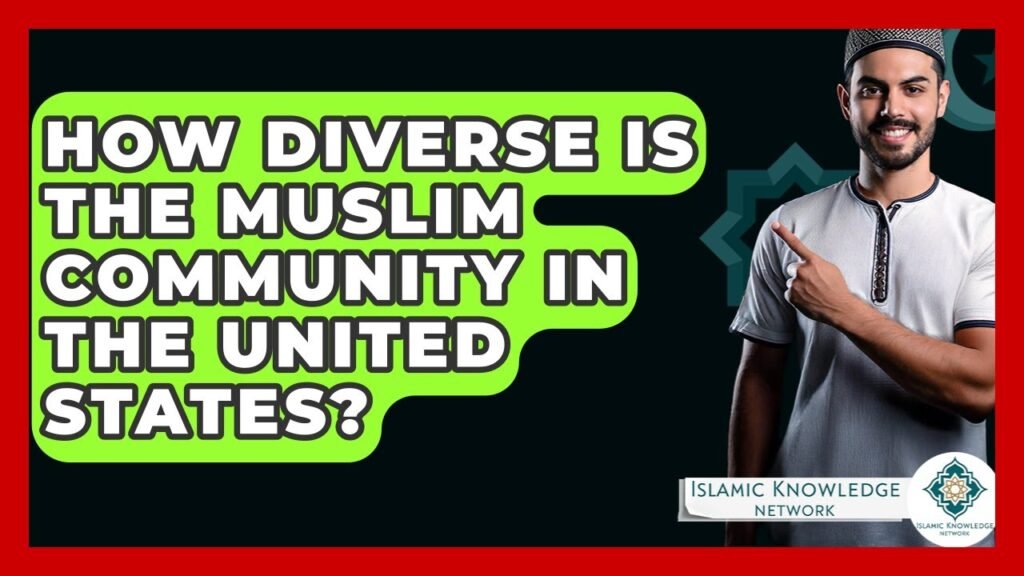You are here to read: How Diverse Is the Muslim Community in the U.S.? – A Thoughtfully Written Guide Offering Spiritual Wisdom and Travel Advice for Every Pilgrim who is going on holy journey of Hajj or Umrah.
The Muslim community in the United States is a rich tapestry woven from diverse cultures, languages, and traditions, reflecting the global nature of Islam itself. With millions of practitioners residing across the country, the community encompasses various ethnic backgrounds, including Arabs, South Asians, Africans, and many others. This diversity is not only a testament to the resilience of faith but also highlights the unique contributions that these groups bring to the broader American society. Understanding this diversity is crucial for fostering dialogue, promoting cultural exchange, and dispelling misconceptions about Islam.
At Airlink Hajj and Umrah, we recognize the importance of connecting with and understanding the various facets of the Muslim community. Our platforms strive to provide insightful articles, including the latest updates on Hajj and Umrah, ensuring that you stay informed about the best pilgrimage practices and experiences. By exploring the diverse backgrounds and traditions within the Muslim community in the U.S., we aim to enrich your spiritual journey while offering valuable resources to enhance your understanding of Islam’s vibrant tapestry. Join us as we delve into the intricate dynamics of this multicultural faith community.
How Diverse Is the Muslim Community in the U.S.?
The Muslim community in the United States is incredibly diverse, encompassing a wide range of cultures, ethnicities, and traditions. According to recent studies, approximately 3.45 million Muslims reside in the U.S., hailing from various regions, including the Middle East, South Asia, Africa, and even European countries. This rich tapestry of backgrounds contributes to a unique blend of practices and beliefs within the community.
In fact, the diversity is not just limited to ethnicity but extends to differing interpretations of Islam as well. For instance, Sunni and Shia Muslims represent major branches, each with their own customs and practices. Additionally, there are various cultural practices influenced by the countries of origin, such as African American, South Asian, and Arab traditions, which further enrich the community’s fabric.
At airlinkhajjandumrah.com, we keep you updated with all Hajj and Umrah news, reflecting the interests and practices of this diverse group. Understanding this diversity is crucial, especially for those planning to embark on their spiritual journeys, as it enables a deeper appreciation of the various traditions that shape Islamic practices in the U.S.
FAQ on How Diverse Is the Muslim Community in the U.S.?
-
What ethnicities are represented in the Muslim community in the U.S.?
You're at the middle of this awesome post at AirlinkHajjandUmrah.com through: How Diverse Is the Muslim Community in the U.S.?. Keep reading, it gets better!
- The Muslim community in the U.S. is ethnically diverse, including individuals from Arab, South Asian, African, Southeast Asian, and European backgrounds, among others.
-
Are there any significant differences in beliefs or practices among various Muslim groups?
- Yes, there are variations in beliefs and practices among different sects (such as Sunni and Shia) and cultural backgrounds, leading to a rich tapestry of traditions and interpretations within the community.
-
How has immigration impacted the diversity of Muslims in the U.S.?
- Immigration has brought a wide range of cultural and linguistic backgrounds, particularly from countries in the Middle East, South Asia, and Africa, significantly enhancing the community’s diversity over the decades.
-
What languages are commonly spoken within the U.S. Muslim community?
- Common languages include Arabic, Urdu, Bengali, Turkish, Somali, Persian, and many others, reflecting the diverse origins of Muslims in the U.S.
- Are there any organizations that represent the diverse Muslim population in the U.S.?
- Yes, several organizations, such as the Muslim American Society, the Islamic Society of North America (ISNA), and the Council on American-Islamic Relations (CAIR), work to represent and support the diverse interests of Muslims across the country.
That wraps up How Diverse Is the Muslim Community in the U.S.?. Thanks for sticking with us till here! Share this: How Diverse Is the Muslim Community in the U.S.? with your friends.
Check our homepage at Air Link Hajj & Umrah for more awesome updates.
Some interesting posts are: 1: Umrah Mubarak, 2: When is Umrah closed 2026?, 3: When does Umrah start after Hajj 2026?
Mushu, an experienced Saudi Arabia traveler and writer, shares insightful tips and spiritual reflections to enhance Hajj and Umrah journeys for fellow pilgrims. He has been to Makkah and Madina from 2016 to 2023 many times and his posts will reflect this.







